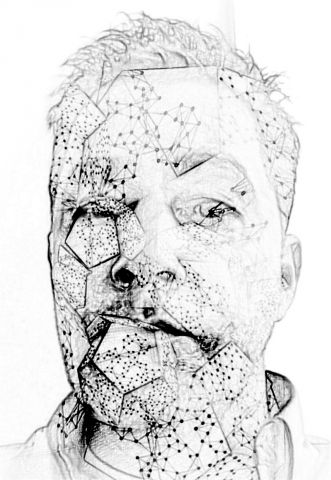I’m back to un-coding the code.
Maybe we shouldn’t be called teachers… Maybe we should be called examples – exemplar? Isn’t that just a better way to describe what we should be doing? Our job description?
I made a mistake with my rant last week. I stood in judgment where it was not my place to, but worse still, I talk of change, yet offer little of or any practical alternative. What kind of example is that?
I don’t know if I believe that pupils learn from us anymore. They carry search engines around with them that’ll dial up anything they happen to want to know… information technology – very cleverly named. I wonder who coined that expression. Yet, that’s precisely what it is… An information highway where increasingly users are born with an umbilical cord driving license…
Interesting turn of phrase there…
…users…
addicts..?
junkies..?
Examples should prescribe something different… shouldn’t they?
My most recent exemplar has been Marion Richardson. Introduced to me at university by another inspirational example, I became smitten with her pedagogy and simplistic teaching philosophy… though on initial first appraisal, it’s anything but simple.
Is the future buried in the past?
My work appears to be finding direction at last. Inspired at Christmas by again seeing Mike Osborn’s mathematical paintings that I mentioned previously, I’ve started pixelating and altering imagery. But its not so much that that I’m interested in… yes, I have developed a methodology using apps that create working drawings to be developed further, but it’s the notion that the single pixel is the key to what I seek…the code to image making… the code to construction that must inevitably be the code to teaching…
Marion Richardson, a great advocate of child Art, meticulously deconstructed the Art of the Art room for her pupils. She pixelated paint, colour, light, dark, imagination, drawing, memory, recall, amongst a host of others, fragmenting them down into simple explanations that fired and inspired her students. Everything was brought down to its simplest form…
De-coded…
In 1917 Marion Richardson wrote in a statement to accompany an exhibition at Dudley Girls’ High School by her pupils, “….drawing is a language, which exists to speak about things that cannot be expressed in words – emotional ideas about the beauty of the world, that come to us. It is these ideas and not literal and photographic representation of appearances that the artist seeks to express”…
…Inherent? Primal? Spiritual?
R. R. Tomlinson and Wilhelm Viola both describe Child Art as needing to be spontaneous, fresh and untroubled, not copied and imaginative, but also cautioned on the role of the educator and the influence that they can impose on their pupils, particularly in a historical context where students were taught by trained artists who had themselves been educated in similar fashion without the freedom of expression or creativity.
So why not just give pupils the building blocks? What would there work look like if we did that – gave them starting points to run with? What are the building blocks? What work must I make as exemplar’s for this theory?
I know what I’m doing at last…
…he thinks..!
If this is about convincing a skeptical government about the worthiness of our subject then lets match their ideas with opportunities they cannot ignore. If they remain hell-bent on pushing through reform, then lets make the reform reflect the ambition of our pupils and plug into a future deserving of change.
I suspect in the not to distant future, the majority of institutions will be working with tablet technology. The technological changes already in my lifetime have been phenomenal. When I started school computers didn’t exist… I’m not that old…
I hear commentator after commentator bemoaning the lack of programmers. A further marriage of the Arts with technology could give us a pivotal life jacket with those who would witness the demise of our cultural heritage… as a starting point.
Digits, letters, atoms, numbers, signs… aren’t these all pixels? The educational building blocks? Add them together; you create something new… words, sentences, structures, solutions, equations.
I have my starting point…

